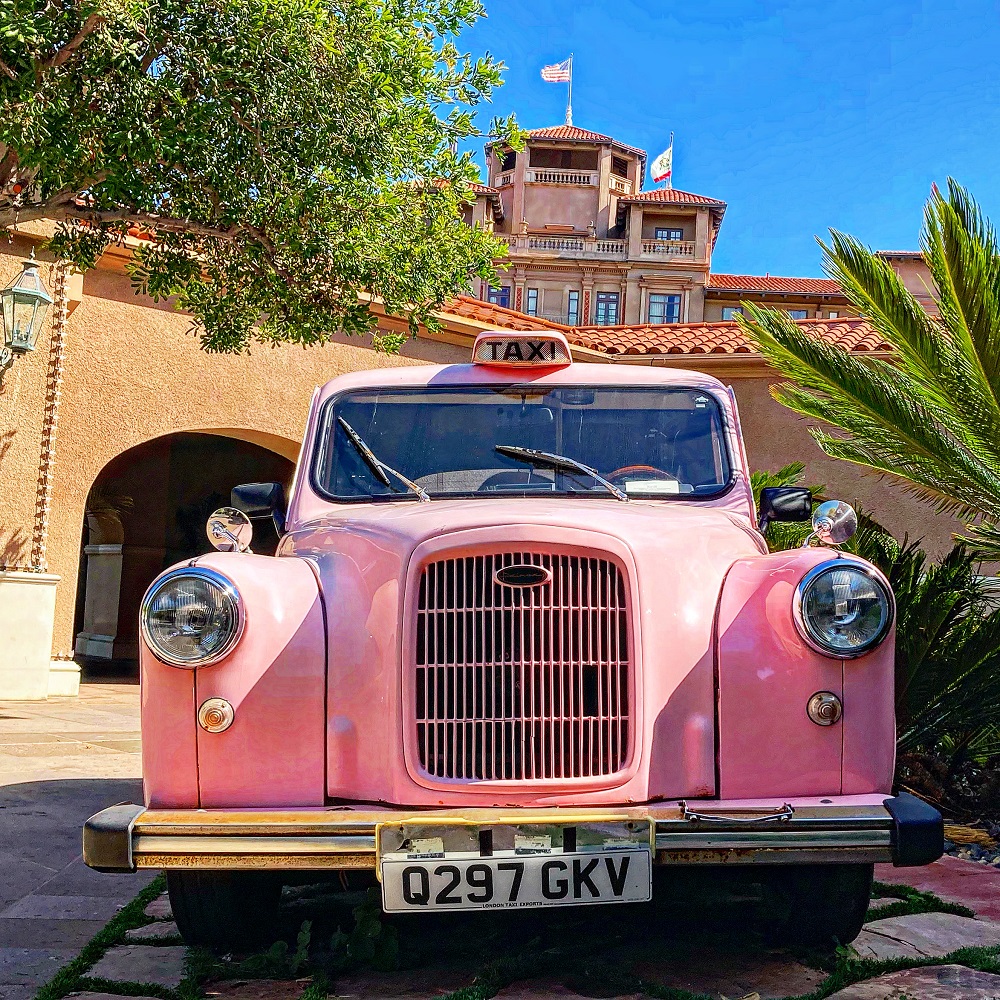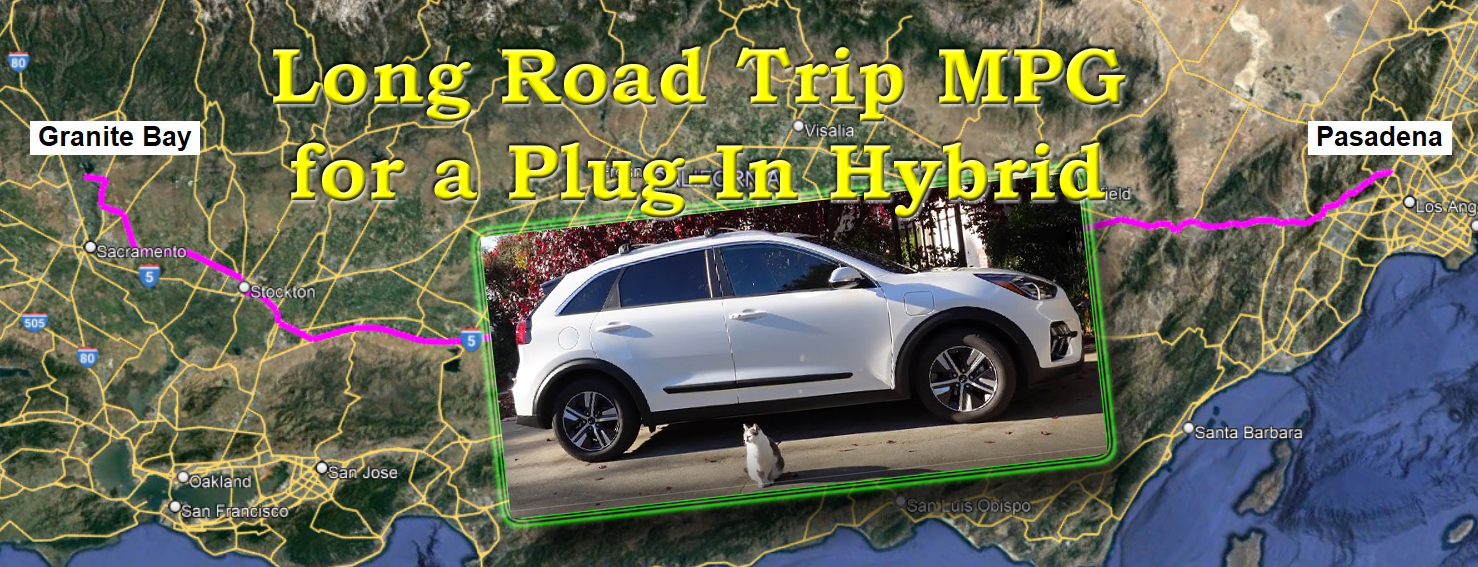My 2020 Kia Niro Plug-In Hybrid gets great gas milage around town. Because of the 26 miles of all electric range and how the car engine shuts down at low speeds, I’ve never been able to get an accurate estimate of the miles per gallon (MPG) of just the 1.6-liter engine. On a recent long road trip to Los Angeles, I made to sure to measure the MPG when the hybrid gasoline engine is the primary source of power for hundreds of miles.
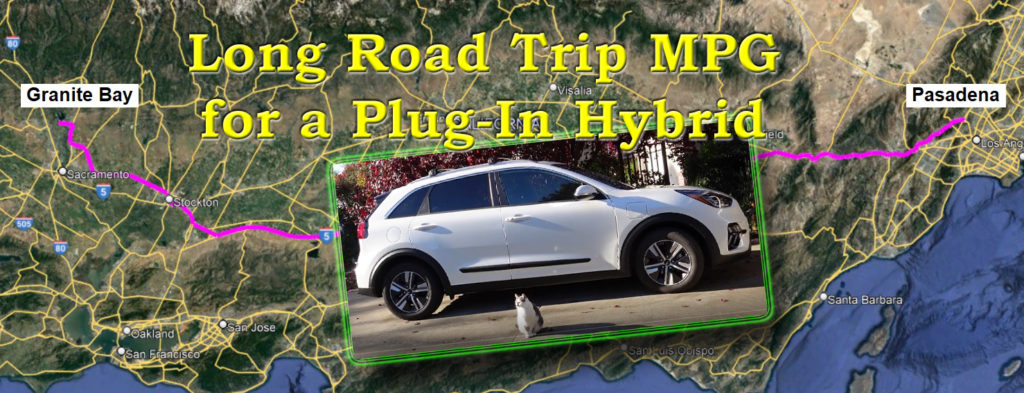
Graphing MPG of the Plug-In Hybrid Down to Southern California
We started with a full battery charge and 26 miles of all electric motive power. By mile 91, the Niro reported 71.1 MPG. When I hit mile mark 215 with the gasoline engine running continuously for approximately for 185 miles, the MPG was 54. We traveled from Granite Bay, near Sacramento, to Pasadena on I-5.
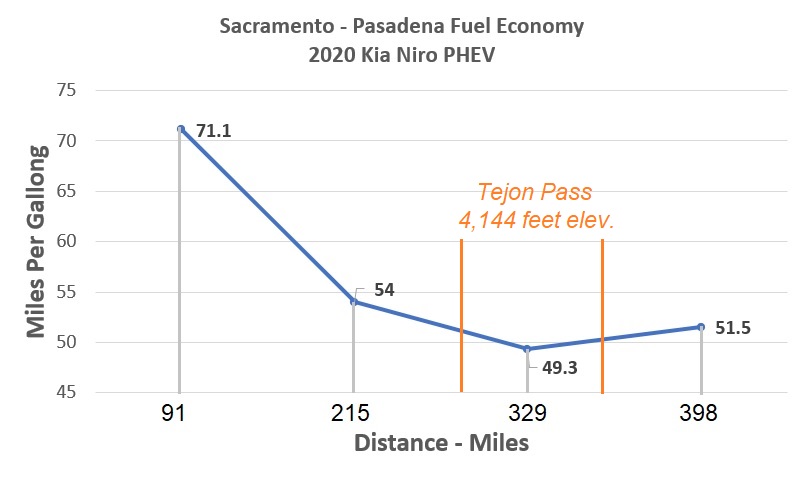
Outside of Bakersfield, I-5 changes from a relatively flat road to climbing up over the mountains. The Tejon Pass is at 4,144 feet of elevation. It was at mile 329 into the trip that the MPG registered 49.3. Obviously, climbing the steep grades up to Tejon Pass forced the little engine to consume more fuel. Once we crested the pass, there were many downgrades where the engine shut down. Consequently, when we reached Pasadena after 398 miles of travel, the final MPG was 51.5.
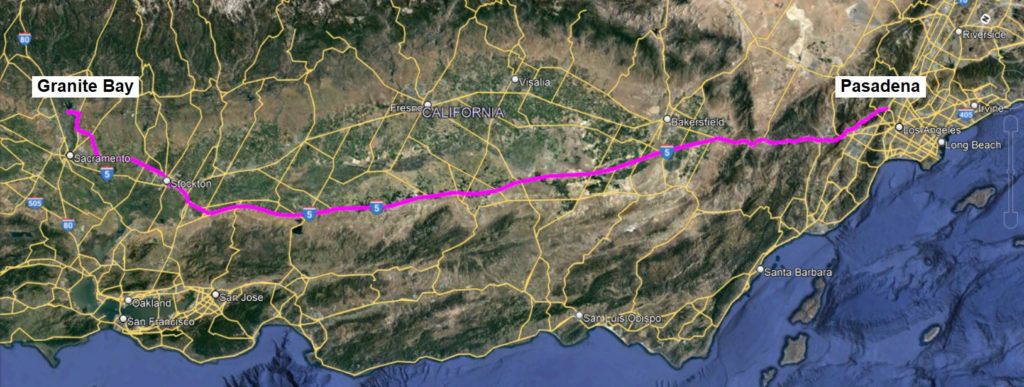
History Research, Dinner, Return to Granite Bay
I spent the next 2 days at the Huntington Library doing history research. In the evening, for dinner, we traveled once to Santa Monica and on another night to downtown Los Angeles. Otherwise, we did not drive around Southern California much. On the first night, the hotel was able to charge the Niro to full capacity of the battery, 26 miles all EV. The next evening the hotel was only able to charge battery to 18 miles all EV. The last night of our stay, the car received no recharge of the battery. When we departed for the return trip, the battery was at 15% or less capacity, 0 EV miles. The car was essentially in hybrid gasoline mode.
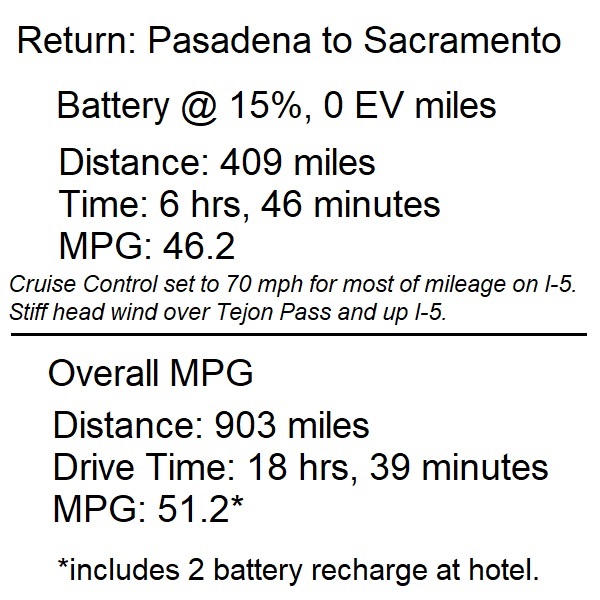
The return trip was a distance of 409 miles. It took 6 hours and 46 minutes of pure driving time to complete. The final MPG for the return trip of 409 miles was 46.2 miles per gallon. There was a pretty good head wind over Tejon Pass and up the Central Valley, which might account for the decreased MPG. For the most part, I set the adaptive cruise control feature to the legal speed limit of 70 MPH. There were times when I had to accelerate to pass a truck or slower vehicle.
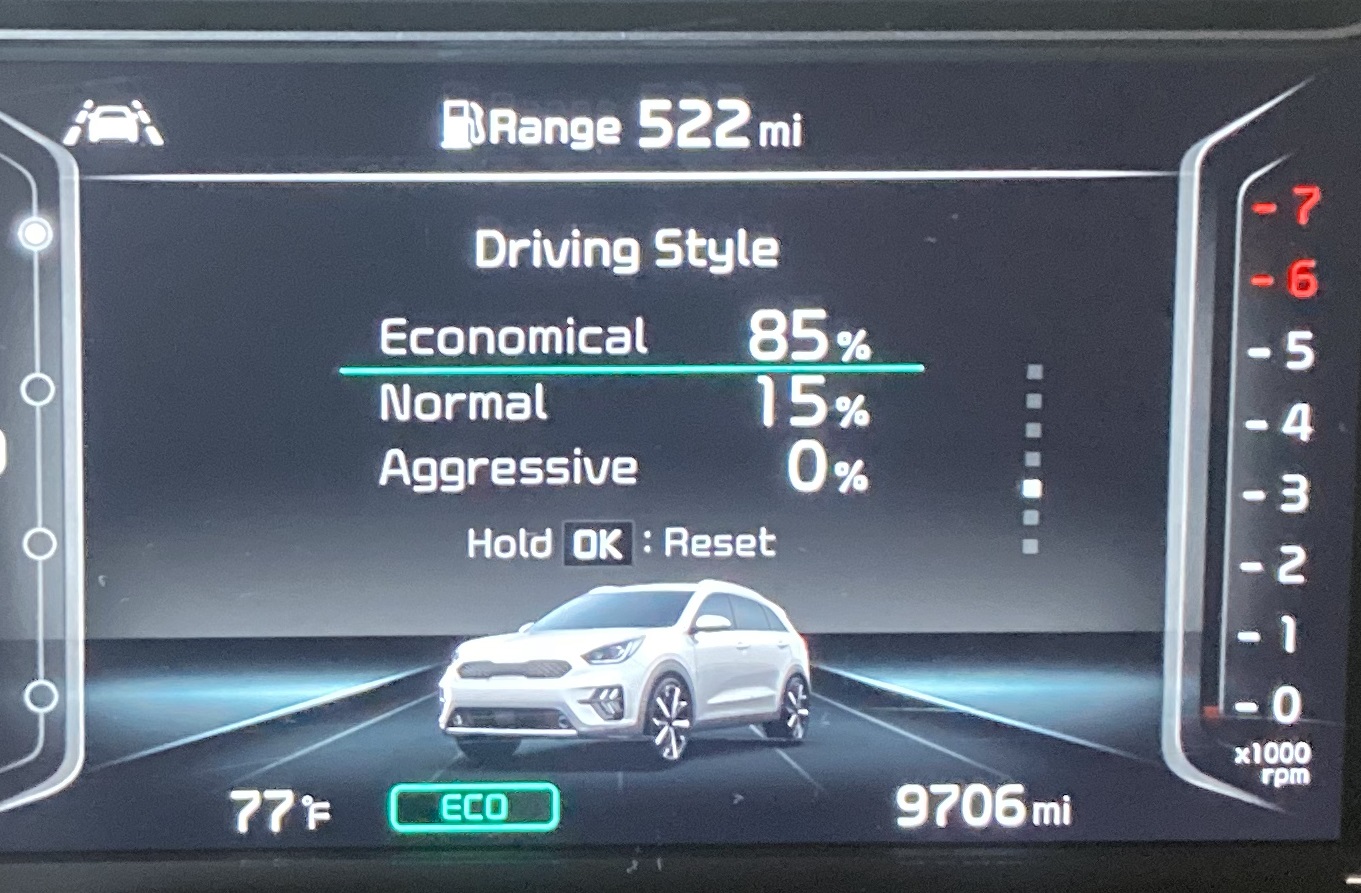
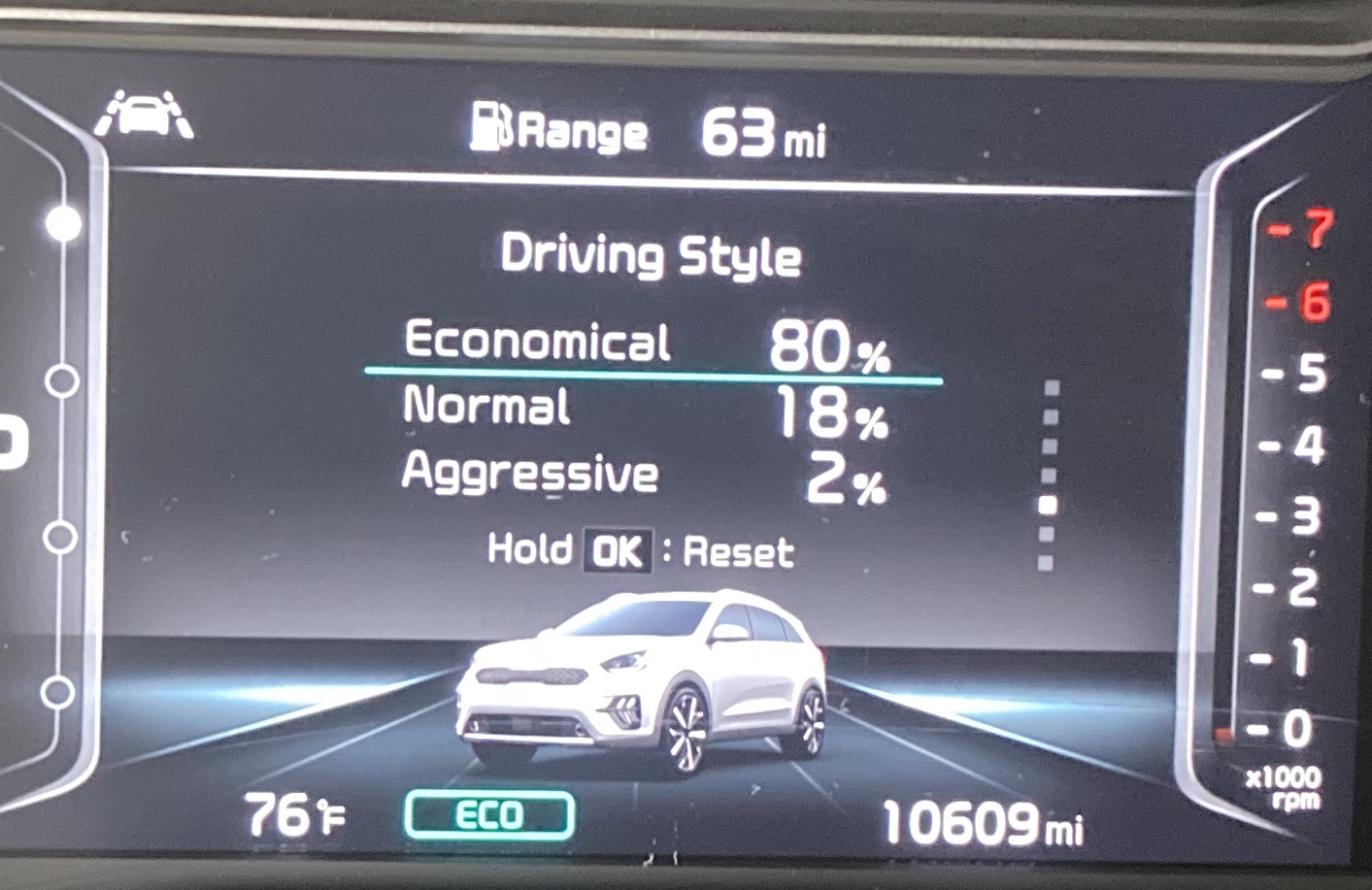
The accumulated drive style, as measured by the car, showed my highway driving was similar to my around town approach. The final drive style was 80% economical, 18% normal, and 2% aggressive. I attribute the aggressive percentage to applying more gasoline to increase speeds to pass some slower vehicles.
50 MPG in Hybrid Mode Freeway Driving
After 903 miles, most of which was on the highway, the Kia Niro reported that the overall MPG was 51.2. My own imprecise calculation for the MPG was lower. I calculated the car consumed 18.3 gallons over 903 miles for an MPG of 49.3. The 2 miles per gallon is probably with in a margin of error for calculations by me and perhaps some by the car. Regardless, the numbers are pretty close.
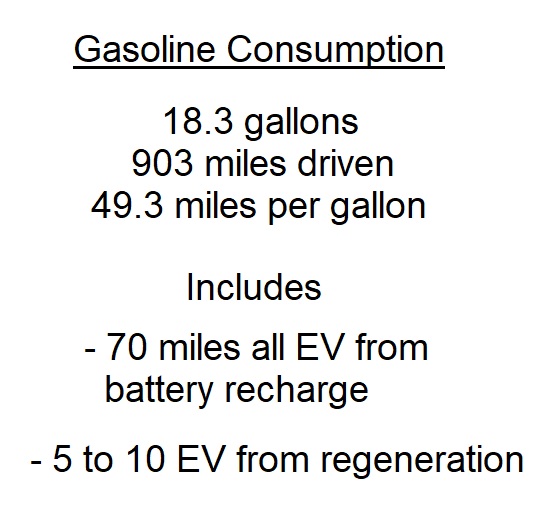
I’m very happy with 50 miles per gallon. I’m even more happy that with over 18 hours of driving, I never felt fatigued or stressed. The adaptive cruise control and lane-keep assist drastically reduces the toll on the driver. The best fuel economy for a hybrid vehicle will be around town in stop-and-go traffic. The slow urban driving allows the engine to shut down more frequently saving fuel. However, at 50 MPG I feel better about taking long trips and knowing I won’t break the budget with the price of gasoline.
